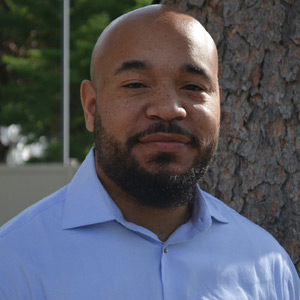11.29.17Mentor Athletes: Darryl Williams’ Tiny (& Brilliant) Adaptation
My colleague Darryl Williams is one of the best people in the country at helping school leaders lead better schools by better understanding teaching and learning.
You’d think that would be enough for one guy, but he also has a secret life coaching his daughter’s basketball team a couple of nights a week. She’s a fifth grader and has just recently taken up the game-so the girls are young and still learning but the team is growing incredibly quickly and every so often, because Darryl and I share an interest in coaching, he shares some of the things he does.

The Basketball Whisperer
Most of what makes a difference in developing young players, Darryl says, is the day-to-day fundamentals of good teaching on the court, but today he shared a brilliant and simple idea that I’d never heard of before.
Darryl and his fellow coaches invited some players from a local high school varsity team to the girls’ practice. And while the fifth graders did get to ask the varsity girls questions at the end of the session that wasn’t the point of their coming.
Nor was having the varsity girls give coaching pointers, which I have seen coaches occasionally do.
No, Darryl skipped the things mentors usually get asked to do and asked the varsity girls instead to practice with his girls- to participate in the drills along side the younger girls but to practice like they would in a varsity practice. To model what it meant to them to practice.
They never had to say a word, those girls, but the learning was deep. Seeing the level of focus and concentration from the older girls was a revelation to the younger girls: How ready they were when an activity started. How locked-in mentally. How they listened and used feedback. How they pushed themselves, physically and mentally. How, when they stood in line for their turn, they were watching each player ahead of them hungrily to learn, not turned around looking at someone else’s sneakers. These things were suddenly clear. When you work on your passes you snap every pass. You do it seeking perfection not just to complete the drill.
“You should have seen their faces when they understood that for varsity girls, the layup line is full-speed,” Darryl told me.
It was the hidden life of a successful athlete laid clear to a young person when they could most benefit from knowing about it. It was showing rather than talking about the biggest topic there is: This is what it means to participate in a practice if you are serious about the game.
Darryl says it was an epiphany for his girls. All of a sudden they understood in a day-to-day sense what it meant to be a serious athlete. Nobody had to explain anything.
Anyway, I thought it was a brilliant idea. (As a brief caveat, in case you are replicating this, they were careful about thinking about contact vs non-contact drills and opposed vs unopposed drills- the idea wasn’t to hurt anyone just to show them what practice looked like to a varsity athlete.)
I know quite a few coaches who bring mentor athletes to the practices of younger players. But they are usually there to talk and inspire through their words. I’ve never before heard of them being asked to just line up next to the younger players and model the tiny details of everyday life- what it looks like to practice like a champion. They inspired with daily mundane actions rather than words.
I suspect it will be a game changer for Darryl’s daughter and her teammates.

Great article. We’ve done similar. Another benefit from what we’ve seen is that the “mentoring” players also get a heightened sense of awareness and become more conscious of those small details that truly make a difference when learning (i.e. locked in mentally, receiving and using feedback, focus, pushing themselves physically and mentally). Once those “mentoring” players understand for themselves what separates them, they can then focus on those things that are in their control when they are having a bad day. They think less about the result and more about their process. Vital in building a growth mindset. Great article. Thank you.